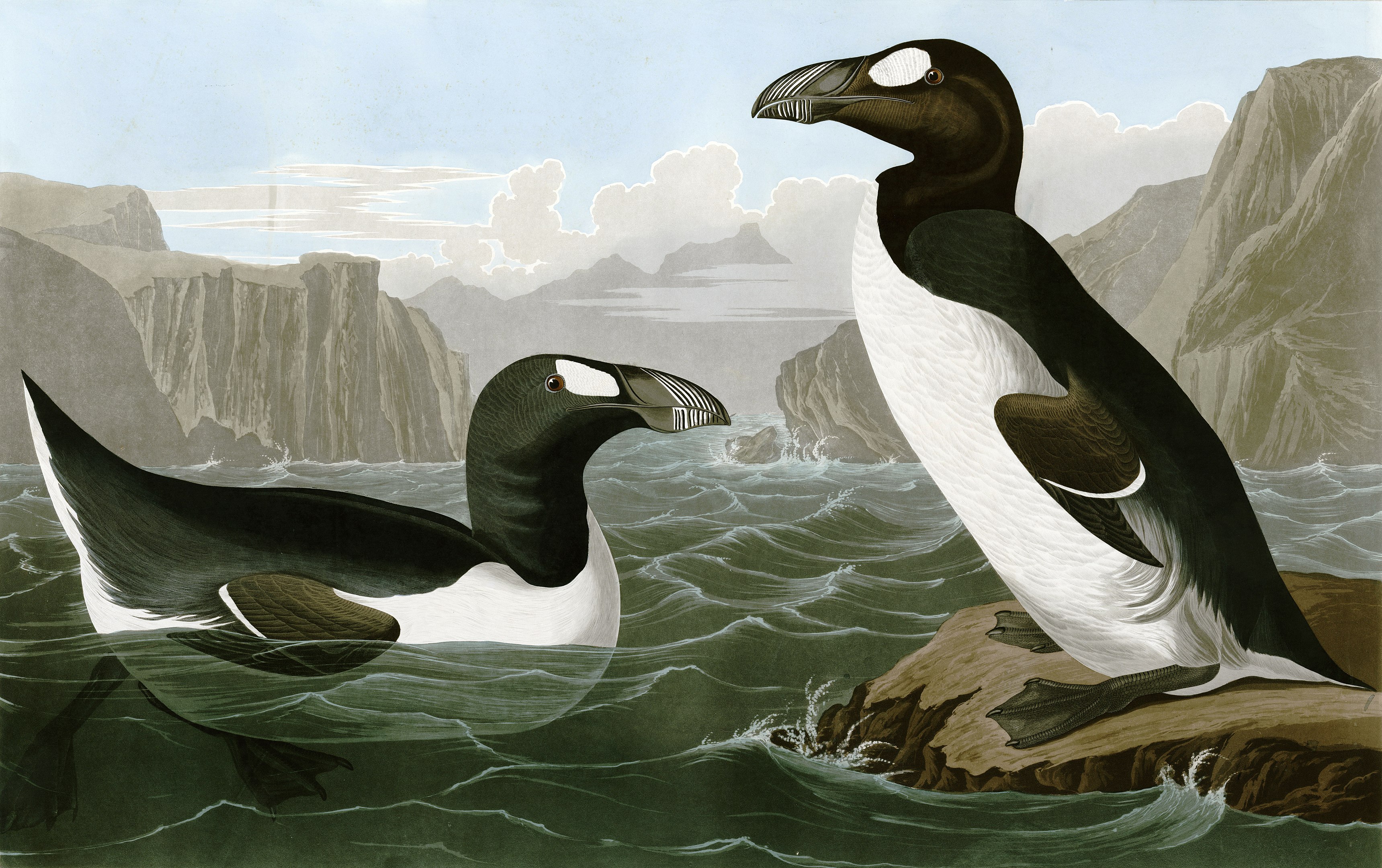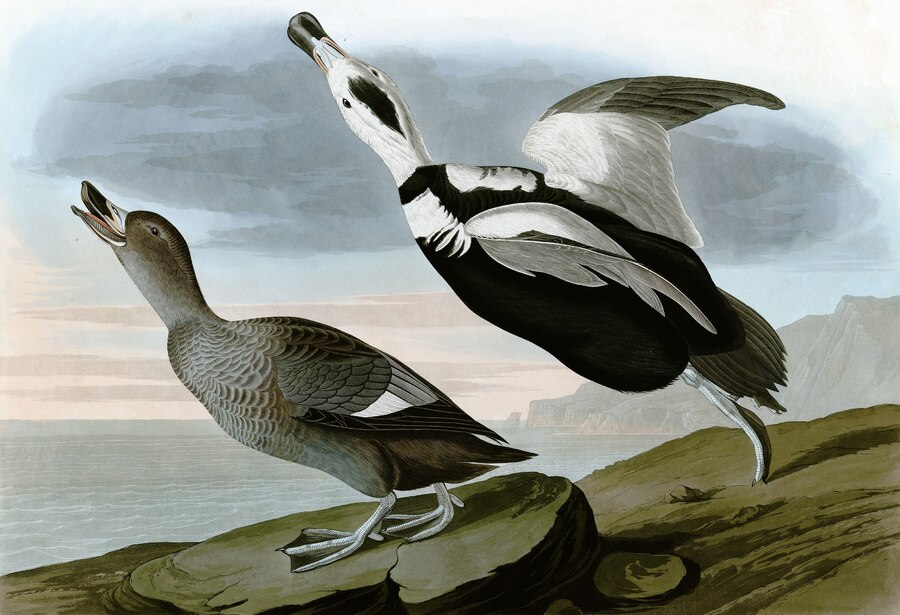Labrador Duck
...[It] used to breed on rocky islets, where it was safe from the depredations of foxes and other carnivorous quadripeds. This safety was, however, unavailing when man began yearly to visit its breeding-haunts, and not content in plundering its nests, mercilessly to shoot the birds.
-- William Dutcher (1894) [1]
The Labrador Duck, or Pied Duck, was a migratory sea duck that wintered off the coast of New England and New Jersey and could be found along coastal Labrador in the summertime. Rare, even in Audubon’s day, the cause of extinction is not entirely known, although widespread speculation is the overharvesting of their eggs combined with the human influence on coastal ecosystems. The last reported sighting of the Pied Duck was in 1878.
Classification
- Kingdom: Animalia
- Phylum: Chordata
- Class: Aves
- Order: Anseriformes
- Family: Anatidae
- Genus: Camptorhynchus
- Species: C. labradorius
Range
The Labrador Duck's range was limited to the American coast of the North Atlantic ocean, primarily wintering off the coasts of New Jersey and New England in the U.S. and breeding in Labrador and Northern Quebec in the summer.
Habitat
The Labrador Duck preferred southern sandy coasts, sheltered bays, harbors, and inlets. It favored the Atlantic shores of the U.S. and Canada, from Labrador in the north to approximately the DelMarVa peninsula in the south.
Extinction
Though always considered rare, the Labrador Duck's populations waned between 1850 and 1870. While its meat was not coveted by hunters, it is likely that its eggs were overharvested and its feathers sought too frequently. Additionally, its diet of mussles and other shellfish suffered when those populations declined as population and industry grew on the Atlantic coast.
Dutcher, William. “The Labrador Duck: Another Specimen, with Additional Data Respecting Extant Specimens.” The Auk, vol. 11, no. 1, 1894, pp. 4–12. JSTOR, https://doi.org/10.2307/4067622.


